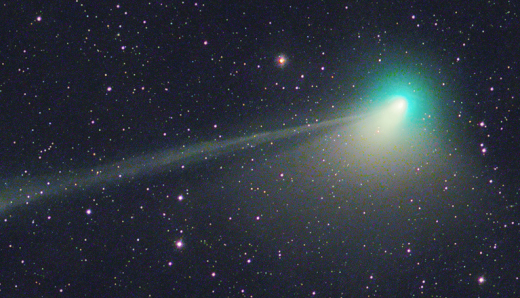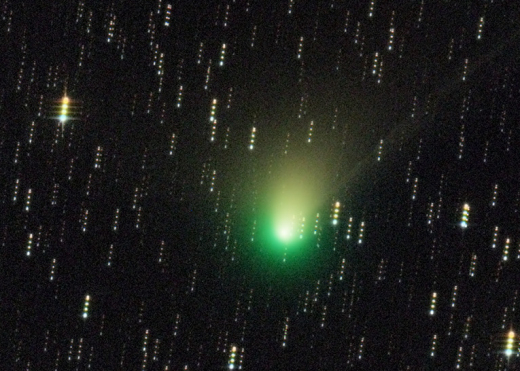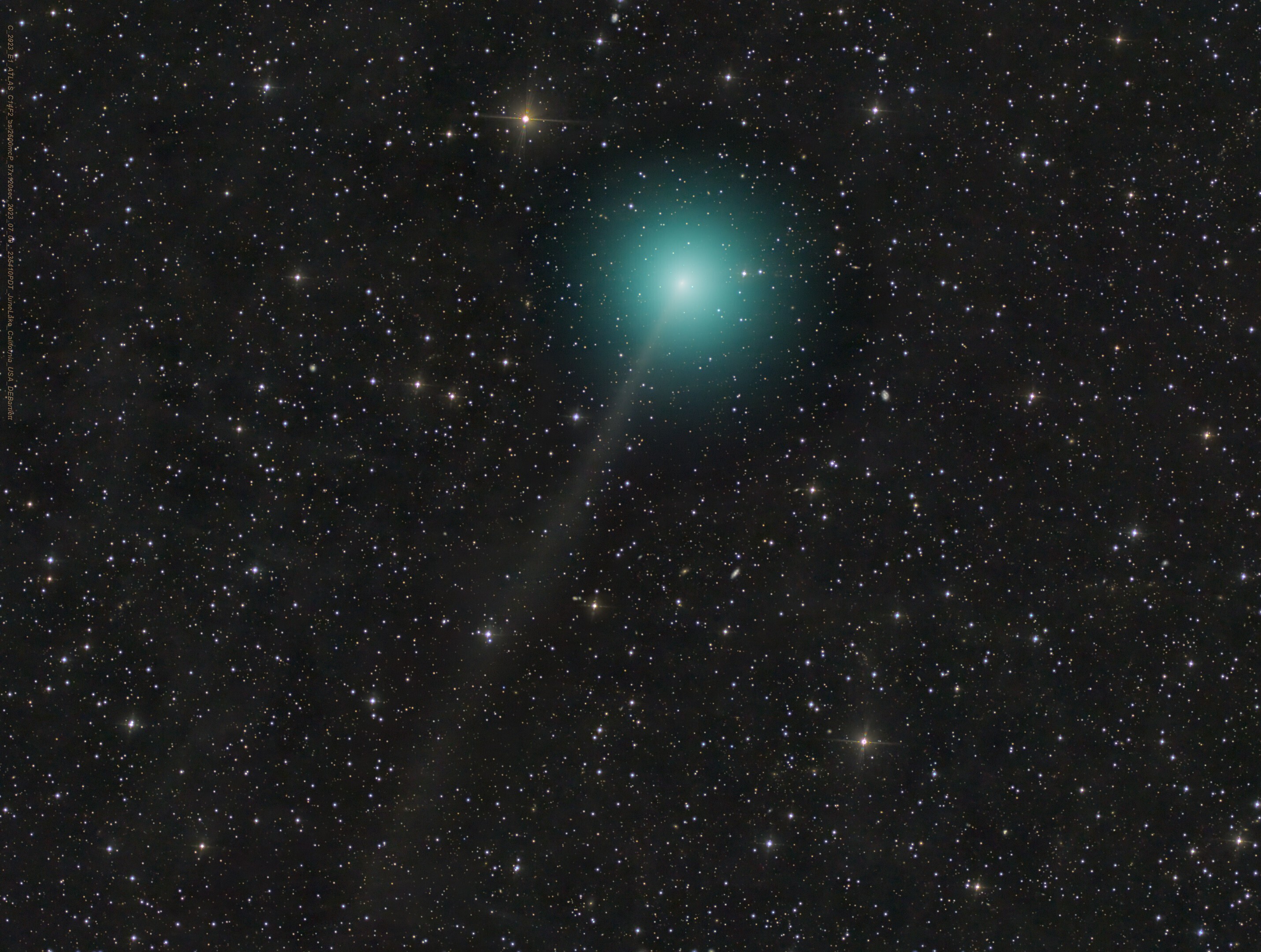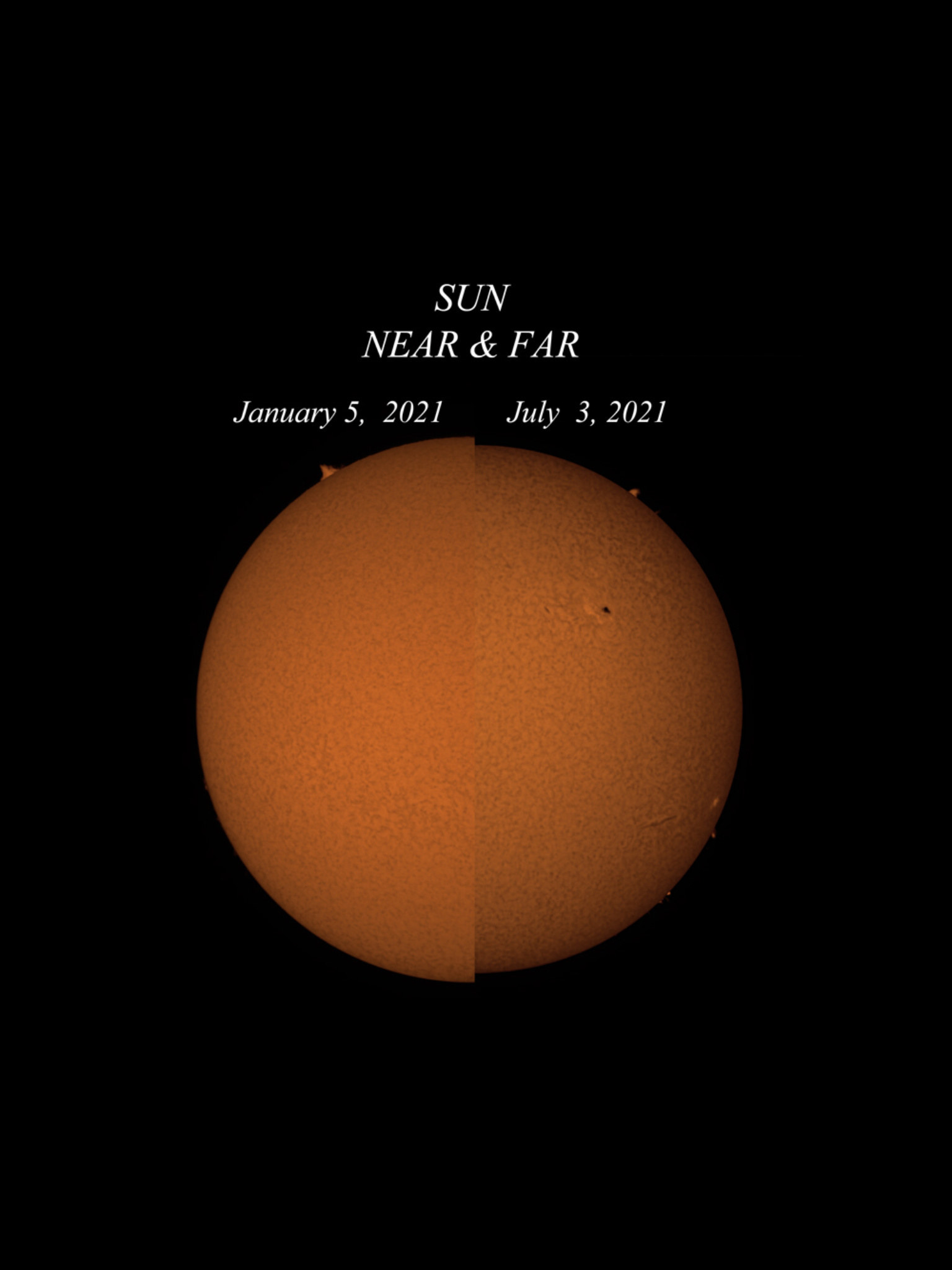#perihelion
#X-ray #Solar #Flares
6-hr max: M3 1015 UT Jan13

#COMET ZTF AT #PERIHELION: Comet ZTF (C/2022 E3) hasn't been this hot in 50,000 years. On Jan. 12th, the comet made its closest approach to the sun (perihelion) only 1.1 AU away. Solar heat has turned it into an easy target for backyard telescopes:
Amateur astrnomer Michael Jaeger took the picture yesterday from his backyard observatory in Weißenkirchen Wachau, Austria. "The comet's narrow ion tail extends far beyond the edge of the image," he says. "Take a look."
Discovered in March 2022 by the Zwicky Transient Facility, Comet ZTF has been falling toward the sun for more than 50,000 years. Now is its moment to shine. Proximity to the sun has brightened the comet to magnitude 6.5, almost visible to the unaided eye.
Soon, strike "almost." After perihelion, Comet ZTF heads toward Earth for a close approach on Feb. 1st (0.28 AU). This will brighten the comet even more to a projected peak magnitude of +5, visible to the naked eye, binoculars, and small telescopes. Between now and then, look for Comet ZTF before sunrise in the constellation #Corona #Borealis
SUNSPOT WANTS TO #FLARE: It seems like every spot on the #sun wants to flare. In the past week alone, three different sunspots have produced X-flares, and even more are crackling with M-class flares. With unstable sunspots scattered across the face of the sun, the chance of a geoeffective flare today is greater than 70%. Solar flare alerts: SMS Text.

#COMET ZTF AT #PERIHELION: #Comet ZTF (C/2022 E3) hasn't been this hot in 50,000 years. Today, Jan. 12th, the comet makes its closest approach to the sun (perihelion) only 1.1 AU away. Solar heat has turned it into an easy target for backyard telescopes:
Never miss another geomagnetic storm. Sign up for Space Weather Alerts and you'll receive a text message when magnetic storms erupt. Aurora tour guides and professional astronomers use this service. You can, too!
EVERY SUNSPOT WANTS TO FLARE: It seems like every spot on the sun wants to flare. In the past week alone, three different sunspots have produced X-flares, and even more are crackling with M-class flares. With unstable sunspots scattered across the face of the sun, the chance of a geoeffective flare today is greater than 70%. Solar flare alerts: SMS Text.
COMET ZTF AT PERIHELION: Comet ZTF (C/2022 E3) hasn't been this hot in 50,000 years. Today, Jan. 12th, the comet makes its closest approach to the sun (perihelion) only 1.1 AU away. Solar heat has turned it into an easy target for backyard telescopes:
"I took this picture on Jan. 11th," says Dalibor Hanžl of Pavlovice, Czech Republic. "The comet looked great through my 8-inch telescope."
Discovered in March 2022 by the Zwicky Transient Facility, Comet ZTF has been falling toward the sun for more than 50,000 years. Now is its moment to shine. Proximity to the sun has brightened the comet to magnitude 6.5, almost visible to the unaided eye.
Soon, strike "almost." After perihelion, Comet ZTF heads toward Earth for a close approach on Feb. 1st (0.28 AU). This will brighten the comet even more to a projected peak magnitude of +5, visible to the naked eye, binoculars, and small telescopes. Between now and then, https://spaceweather.com/
Today, in about seven hours of writing this (16:17Z), the #Earth will be at #Perihelion, that is, at its closest point to the #Sun in its orbit. In accordance with Kepler's Laws of Planetary Motion, it will also be travelling at its top speed whizzing around our star. However, the orbit is almost circular, with an eccentricity of merely 0.0167 and it's about 1% closer to the Sun than at aphelion and so it's easy to miss.


